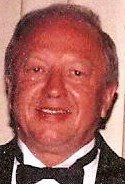With the 2010 midterm congressional election campaign entering its final week, the fundamental divide in American politics has rarely been defined with more raw clarity than it is now.
On the one side are voters representing a vibrant private sector that creates jobs, builds prosperity and throbs with opportunity. Here are found the Tea Party movement, most congressional Republicans and a few of their Democratic colleagues, millions of independent voters, Main Street and small-business associations, and, increasingly, seniors. The other side is led by government employee unions who take from the private sector to further enrich and empower themselves and their political allies, including President Obama, House Speaker Nancy Pelosi, Senate Majority Leader Harry Reid, and the Democratic majority that has controlled both chambers in Congress since 2007. The unions' supporting cast includes radical Big Green environmentalists, trial lawyers, most precincts of the mainstream media, and college professors.
Obama and company have been on a demagogic spree in recent weeks, attacking the U.S. Chamber of Commerce and a host of shadowy, unnamed "foreign interests" for allegedly pumping millions of anonymous dollars into U.S. politics to buy the election. The charge is demonstrably false, but that doesn't prevent its endless repetition. On Friday, however, we learned courtesy of the Wall Street Journal that the biggest political spending in 2010 is by the American Federation of State, County and Municipal Employees. AFSCME will have funneled an estimated $87.5 million into the campaign by Nov. 2, all of it going to Democrats and an amount far exceeding the chamber's $75 million. More millions are being poured into Democratic campaign coffers by other public-sector unions. On Friday, for example, the National Education Association spent $500,000 on ads aimed at helping Democratic Rep. Joe Sestak defeat former Rep. Pat Toomey, the Republican in the Pennsylvania Senate contest.
But there is a fundamental problem here that FDR understood years ago and that AFSCME President Gerald McEntee inadvertently highlighted when he told the Journal: "We're spending big. And we're damn happy it's big. And our members are damn happy it's big -- it's their money." Actually, it's not simply "their money." Every dollar paid to a unionized government worker was taxed away from somebody who earned it in the private sector. So when these unions spend millions to elect Democrats who will vote for bigger government, they are literally using money from the productive part of America to enable more government taxing and spending. FDR might well have had this inconvenient fact in mind when he wrote in 1937 that "meticulous attention should be paid to the special relationships and obligations of public servants to the public itself and to the Government ... the process of collective bargaining, as usually understood, cannot be transplanted into the public service."
The interests of government employee unions are inextricably opposed to the public interest. It's time campaign finance law recognized this truth.
Subscribe to:
Post Comments (Atom)

No comments:
Post a Comment